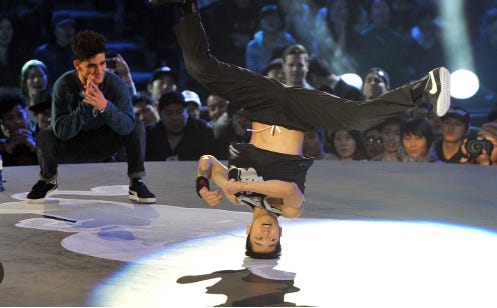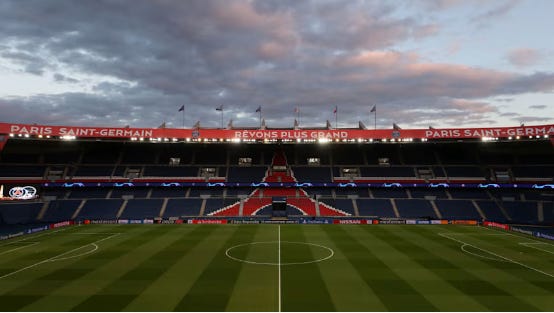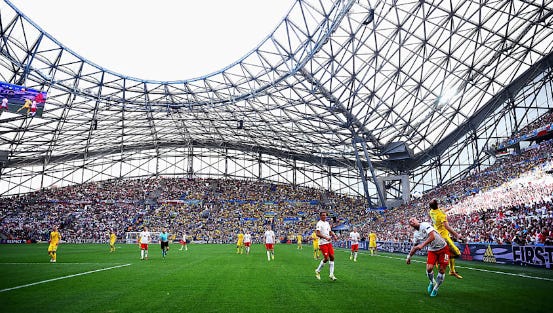The Paris Olympics: 1924 vs 2024
100 years ago Paris hosted the Olympic Games. In six weeks the city does it again. What's different and what is the same?
Paris 1924
The 1924 Paris Olympic Games Paris ran from 4 May to 27 July, with the heart of the action being Colombes, a suburb in the northwest of the city.
The Athletes
44 Nations sent teams to Paris in 1924. In total, 3,089 athletes (135 of them women) competed in 126 events in 17 sports, figures that reflected the growth of the Games in the intervening four-year cycle.
After competing in Paris in 1900, women would not compete again until 1924 when the Games’ governing body, the International Olympic Committee (IOC), voted to formally admit them. This decision was opposed by Turkey, Japan, France, and the United States. Despite the objections at the time, women became a permanent feature of the Games from that point forward.
The 1924 Budget: $10,000,000 (USD)
The Venues
For the first time, all of the athletes stayed at an Olympic Village. Built near the Olympic Stadium, the Village comprised portable wooden houses complete with running water, and also featured a post office, bureau de change, hairdressing salon and a restaurant.
Formerly a racecourse that had in 1907 been converted into an arena hosting athletics, rugby and football (when it was known as the “Stade du Matin”), the Olympic Stadium was completely refurbished for the 1924 Games, with its capacity also being increased to 45,000, including seating for 20,000.
As well as hosting the Opening and Closing Ceremonies, it was also the venue for the track and field, football and rugby competitions. A new aquatics stadium and tennis courts were also built in the vicinity of the stadium.
As for the other sports, they were staged in and around Paris, just as they had been in 1900. The Velodrome de Vincennes was the venue for cycling, fencing, wrestling, boxing and weightlifting, while the equestrian events were held at the Hippodrome d’Auteuil.
The swimming events took place at the Piscine des Tourelles, which housed the first ever 50-meter Olympic pool, with lanes marked out by cork floats.
Among the other venues were Versailles, Issy-les-Moulineaux, Reims and Bassin d’Argenteuil, where the rowing and canoeing competitions took place, the latter being added to the program as a demonstration sport.
Media
The event's rising popularity was confirmed by the presence of more than 1,000 journalists, some of whom covered the Games on the radio, the first time the Olympics had been broadcast on the airwaves.
Olympic Art
The Art competitions at the 1924 Summer Olympics were the first time that the Olympic Art competitions were contested seriously, with 193 entries in five categories. A total of 14 medals were awarded, though none were given in the music category. Painter Jean Jacoby of Luxembourg won a gold medal in painting.
1924 Olympic Stars
Several athletes wrote their names into the Olympic history books at Paris 1924, Johnny Weismuller in swimming and the 'Flying Finns' of the track, Paavo Nurmi and Ville Ritola.
The winner of three golds and a silver at Antwerp 1920, Nurmi achieved a remarkable double in Colombes on 10 July, winning the 1500m and 5,000m within 55 minutes of each other.
Swimmer Johnny Weissmuller won three gold medals in swimming and one bronze in water polo. He won the title for the 100-meter freestyle at the 1924 Summer Olympics, beating Duke Kahanamoku for the gold medal. He also won the 400-meter freestyle and was a member of the winning U.S. team in the 4×200-meter relay.
Paris 2024
The Athletes
10,500 athletes (including 5250 women) from 200 nations will compete in Paris.
For the first time in Olympic history there will be parity of numbers between male and female athletes.
Budget: $9.585 Billion (USD)
Total athletes: 10,500 (200 nations) will compete in 329 events across 39 sports.
The Opening Ceremony
For the first time in Olympic history the Opening Ceremony will not take place in a stadium. Paris 2024 is breaking ground by holding the opening ceremony in the heart of Paris along its main artery: the Seine river.
The parade of athletes will be held on the Seine with boats for each national delegation. Winding their way from east to west, the 10,500 athletes will cross through the center of Paris where their various competitions will be held over the following 16 days.
New Events
The 2024 Olympics will include four new sports: breaking, skateboarding, surfing, and sport climbing.
The Venues
For the Paris 2024 Olympic and Paralympic Games, there are 11 iconic venues for all events. I will just brush quickly over the larger venues below.
The Stade de France, the country’s largest stadium, will transform into the Olympic Stadium after three decades of hosting France’s biggest sports events.
Built in Saint-Denis, the Stade de France was designed by the architects Macary, Zublena, Regembal and Costantini. It was created for the Football World Cup held in France in 1998. Capacity: 77,083 spectators
Roland Garros Stadium Capacity: 34,000 spectators
A legendary sports complex, Roland-Garros Stadium has borne witness to some of the greatest moments in tennis history over the 95 years it has hosted the French Open (such as the classic battle between Chris Evert and Martina Navratilova in the 1985 final, or 19-year old Rafael Nadal winning the tournament on his first attempt).
Parc des Princes Stadium Capacity: 47, 926 spectators
As one of the most successful soccer nations in history, France is full of exceptional stadiums where legends of the beautiful game have played. The ‘Parc’ was first built in 1972 and has been the home of football club Paris Saint-Germain since 1974.
Stade Velodrome (Marseille) Capacity: 67,394
Stade Velodrome, one of two Games venues in the city of Marseille for the Games (along with Marseille Marina, which will stage the sailing events), was a natural choice to stage a portion of the football competition for Paris 2024.
It has been the home of Marseille’s professional soccer team since being built in 1937. It has also hosted matches for the French national teams since the first half of the 20th century.
In closing, remember this is in fact Paris’ third Olympics. They hosted the Games in 1900 the first time. Only one other city, London, has hosted three Games.
Paris is able to do this in part because they made a commitment to sustainability by choosing to host 95% of all events using existing facilities. Therein they have set an example for all future host cities staring with Los Angeles in 2028.

















